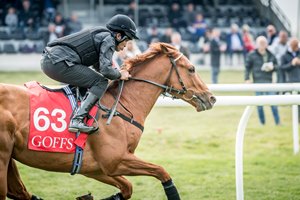Project Addressing Breeze-Up Sale Perceptions Unveiled


A project aimed at addressing perceptions that breeze-up graduates are only short-term racing prospects was presented by author Fiona Dowling at a Feb. 18 conference in London.
The event, organized by the University of Liverpool in partnership with the Racing Foundation, included a session titled "Breeze-up horses: How do they perform versus yearling sales and are they better value?"
The presentation was a summary of Dowling's dissertation submitted in partial fulfillment of the Thoroughbred Horseracing Industries MBA, her research having been carried out on behalf of the Breeze-up Consignors Association.
BUCA represents the interests of those selling breeze-up horses, with Dowling's project aimed at providing evidence of career longevity and value to purchasers.
Sales and race data from breeze-ups and yearling sales over a three-year period (2013-15) was analyzed, the sample size consisting of 1,473 breeze-up horses and 8,634 yearlings sold at public auctions in Britain and Ireland.
What is a Breeze-Up Sale?
The breeze-up concept started in the 1970s in the United States, with a saddle and tack put on a horse who would then canter (or "breeze") up a short straight. The idea then caught on in Europe. Auctions are for unraced 2-year-olds, many of whom have been bought as yearlings by their consignors, who then prepare them for breezing for a couple of furlongs. Dowling's research found that, on average, a breeze-up horse raced within a month of sale.
The findings showed that graduates from breeze-up sales exhibited career longevity and raced for as long as horses who were bought at yearling sales.
Dowling's research also concluded that buyers of breeze-up horses made an average savings of 18% from point of purchase to date of first start, and the breeze-up market produced a higher percentage of 2-year-old runners annually.
On average, 72% of horses sold at breeze-up sales raced at 2, compared to 65% from yearling sales.
From the sample years analyzed, 8.3% of breeze-up horses failed to make the racecourse, the rate found to be decreasing annually, with a higher percentage from the yearling cohort failing to race each year (13.2%).
The first breeze-up of the European season is in six weeks' time at Ascot, that two-day affair being followed by sales at the Craven meeting (April 13-15), Goffs UK (April 22-23), Guineas meeting (April 30-May 1), Arqana (May 8-9), and Fairyhouse (May 21-22).
